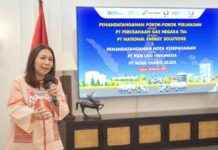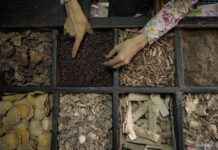The Answer Key for Grade 5 Mathematics Page 252 Independence Curriculum, Let’s Practice – Tribunnews
In the world of education, the search for answers is a vital part of the learning process. Students, teachers, and parents often rely on answer keys to guide them through the complexities of academic challenges. One such key was recently unveiled on page 252 of the Grade 5 Mathematics curriculum under the Independence Curriculum. The chapter at hand, titled ‘Data,’ presents students with a stimulating exercise labeled ‘Let’s Practice.’
The scenario unfolds with a relatable tale of Pak Chandra, a vegetable garden owner with a penchant for growing tomatoes. Not only does he cultivate these juicy fruits for personal consumption, but he also sells them in the market. As the harvest season approaches, Pak Chandra diligently picks his tomatoes once a week, promptly delivering them to vegetable vendors. The record of Pak Chandra’s tomato harvest can be found on the subsequent page in tabular form.
1. Crafting a Pictogram
One of the tasks assigned to students is to create a pictogram based on Pak Chandra’s tomato harvest data. This visual representation aims to enhance their understanding of the numerical values presented.
2. Calculating Total Harvest
A pivotal question posed to the students is the total yield of Pak Chandra’s tomato harvest over a span of 5 weeks. The answer reveals a sum of 60 kg, showcasing the consistent output of Pak Chandra’s farm.
3. Identifying Fluctuations
Students are prompted to analyze the fluctuations in Pak Chandra’s harvest. Notably, the harvest experiences an increase in the second and third weeks, providing a prime opportunity to delve into the dynamics of agricultural output.
4. Unveiling Declines
The most significant decline in Pak Chandra’s tomato harvest is observed in the fourth and fifth weeks. A decrease of 8 kg per week is noted during this period, emphasizing the importance of monitoring agricultural trends.
5. Calculating Discrepancies
As a final challenge, students are tasked with determining the difference between the highest and lowest yields of Pak Chandra’s tomato harvest. This exercise encourages critical thinking and mathematical reasoning, fostering a holistic approach to problem-solving.
In conclusion, the provided answer key serves as a valuable tool for parents guiding their children through the learning process. Before consulting the key, students are encouraged to attempt the questions independently. This methodology not only enhances their problem-solving skills but also instills a sense of responsibility and diligence in their academic pursuits. As the world of education continues to evolve, resources like this answer key play a crucial role in shaping young minds and fostering a love for learning.






















